Author: Zack Wainwright, Analyst at Fidelity (originally published on March 19)
Translated by: Felix, PANews
As the current market cycle progresses, investors are closely watching for potential signs of Bitcoin's rise following the U.S. elections.
In November 2024, according to Glassnode's closing price, Bitcoin broke through the previous all-time high set in March 2024, entering a true price discovery phase for the first time since surpassing $20,000 in December 2020. Historically, this shift has occurred during previous acceleration phases, characterized by high volatility and high profits in Bitcoin's price cycles.
The key question now is: Has Bitcoin already reached the peak of this cycle, or is there still room for further increases?
Post-Election Bitcoin Rebound and Historical Rises
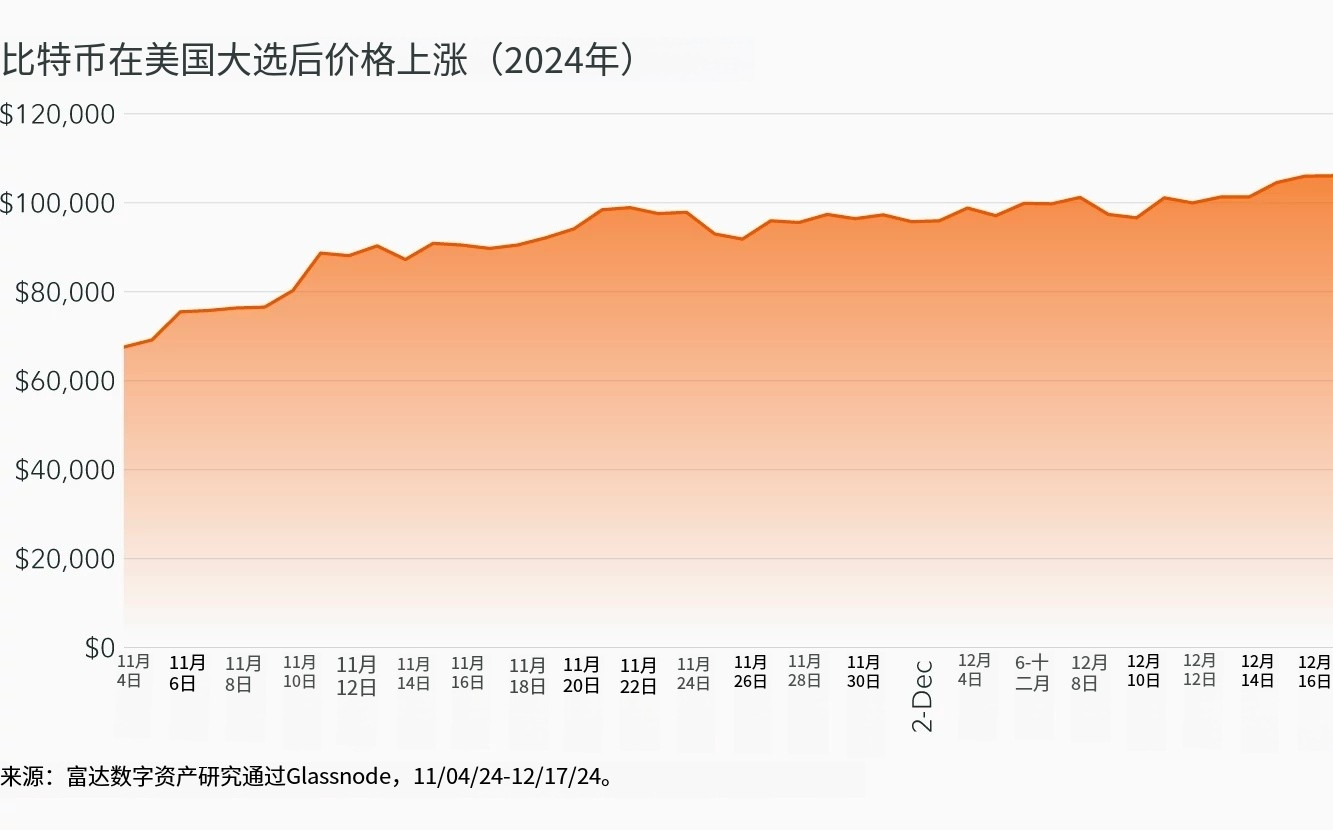
In the rebound of November 2024, Bitcoin rose 56%, entering a price discovery phase reminiscent of past acceleration phases, as shown in the chart "Bitcoin Rises After U.S. Elections (2024)."
Historically, Bitcoin first broke through $30 in 2013, soaring to an all-time high of $229 before cooling off. Similarly, in 2017, Bitcoin broke through $1,100, entering a price discovery phase, with the asset rising to nearly $3,000 before cooling off.
Both breakthroughs highlight the volatility and profit patterns that typically occur during acceleration phases. Each rise was followed by a consolidation phase. In 2013 and 2017, the consolidation phases eventually led to a second surge.
Although the trajectory of the current cycle has not fully unfolded, these historical similarities suggest the possibility of a similar upward trend.
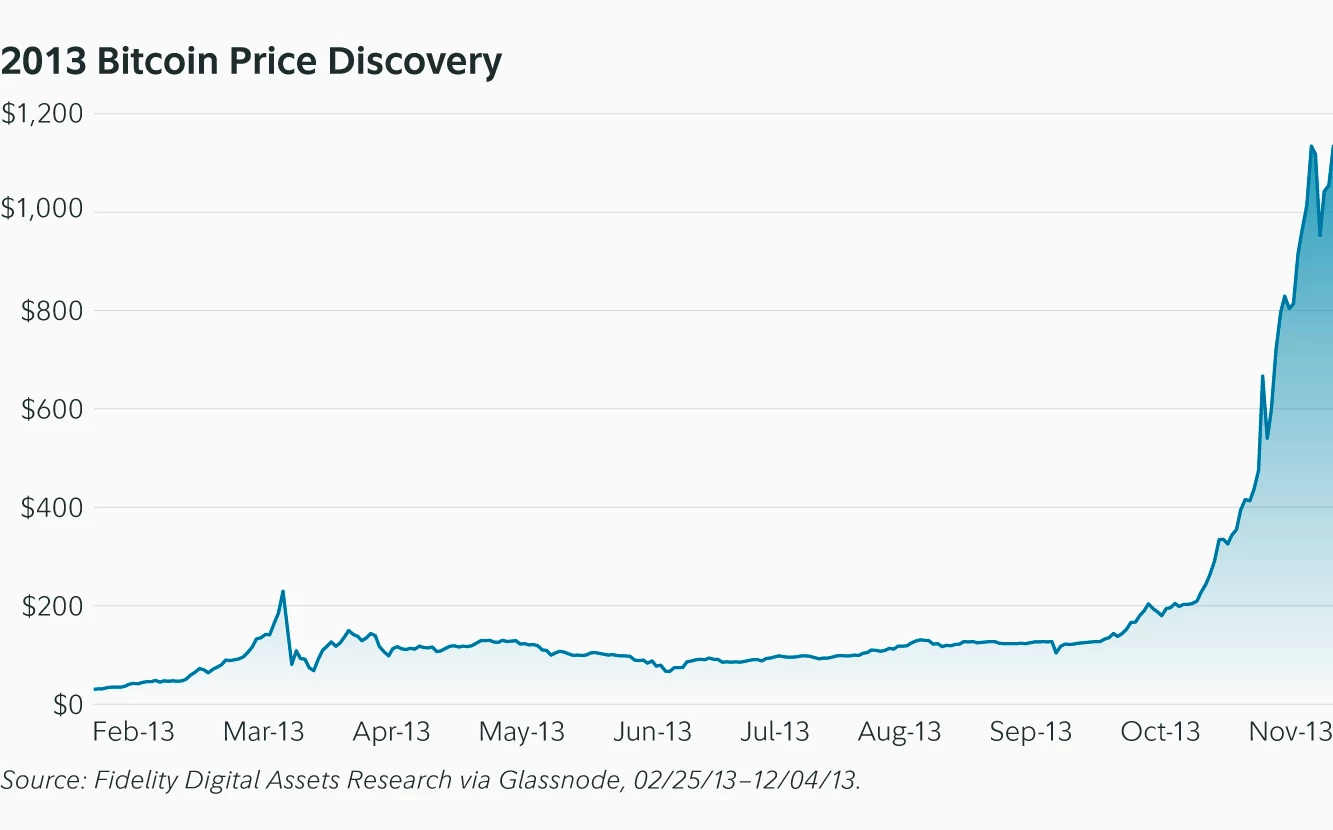
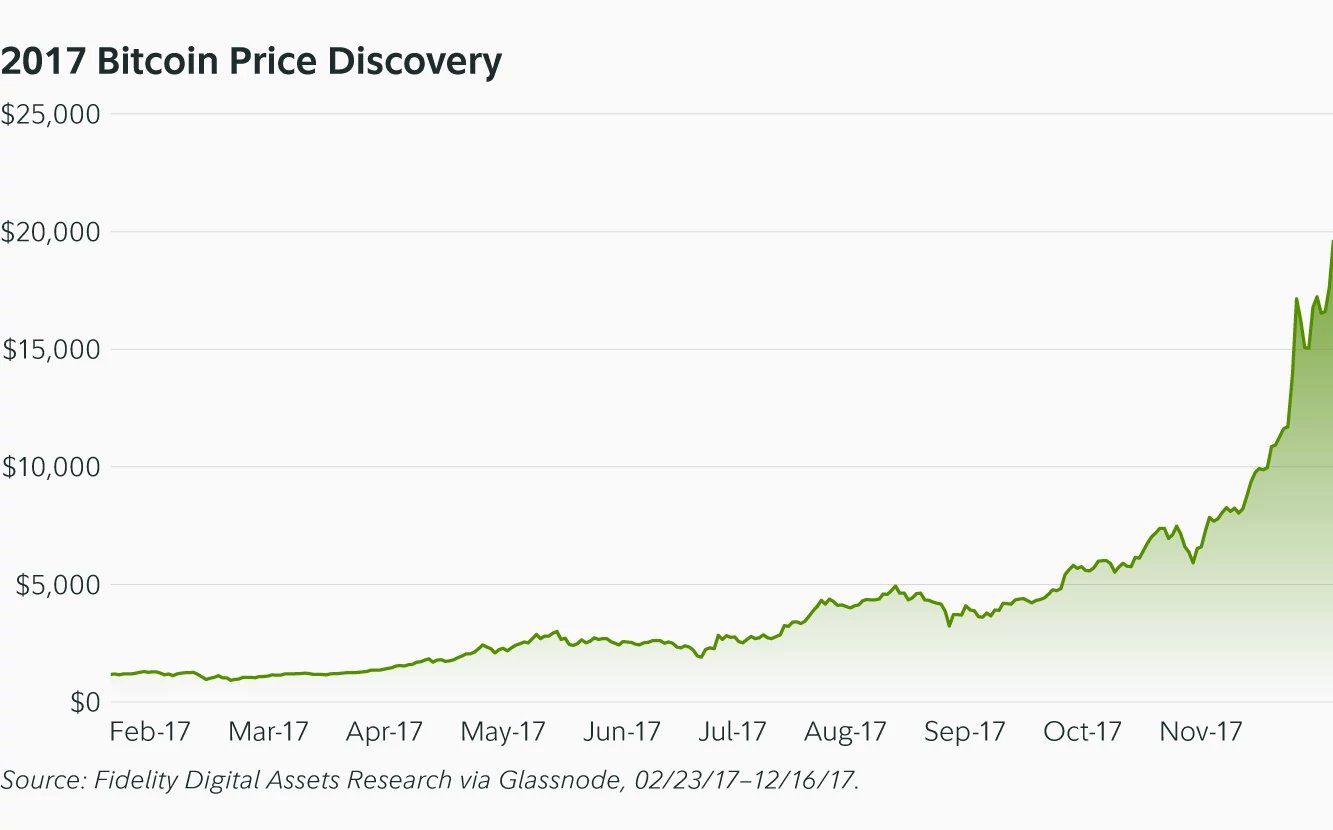

Rising Levels of Volatility
From a weekly perspective, Bitcoin's actual volatility has risen sharply, which may indicate that the consolidation phase of the past few months is nearing its end. This behavior aligns with what is observed during acceleration phases. Historically, actual volatility during an acceleration phase has been on the rise. From the start of the acceleration phase on July 15, 2024, to March 6, 2025, the annual actual volatility increased from 45% to 51%.
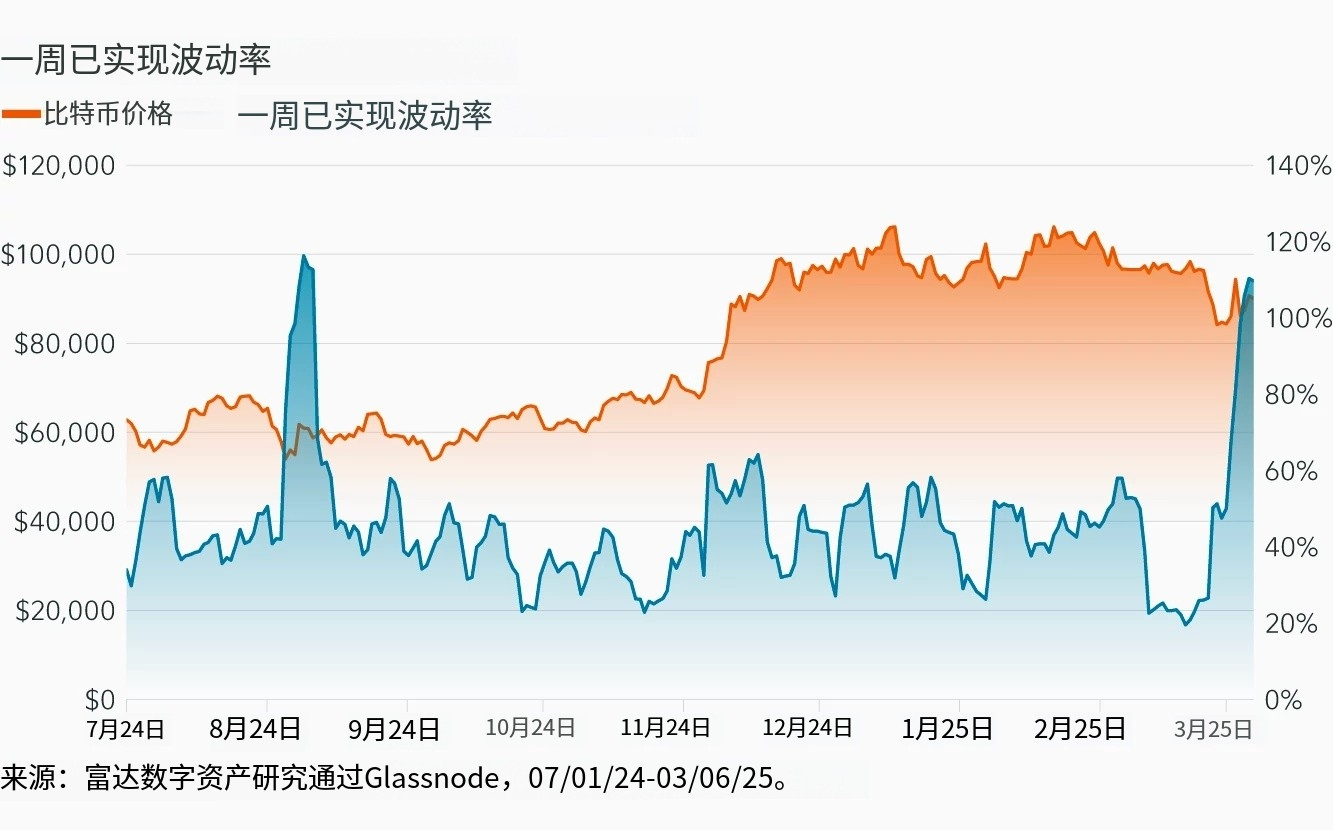
Additionally, Bitcoin's volatility has historically tended to trend upward. In terms of monthly returns, benchmarked against the S&P 500, Bitcoin has shown higher levels in both directions, but with a greater frequency and magnitude of increases.
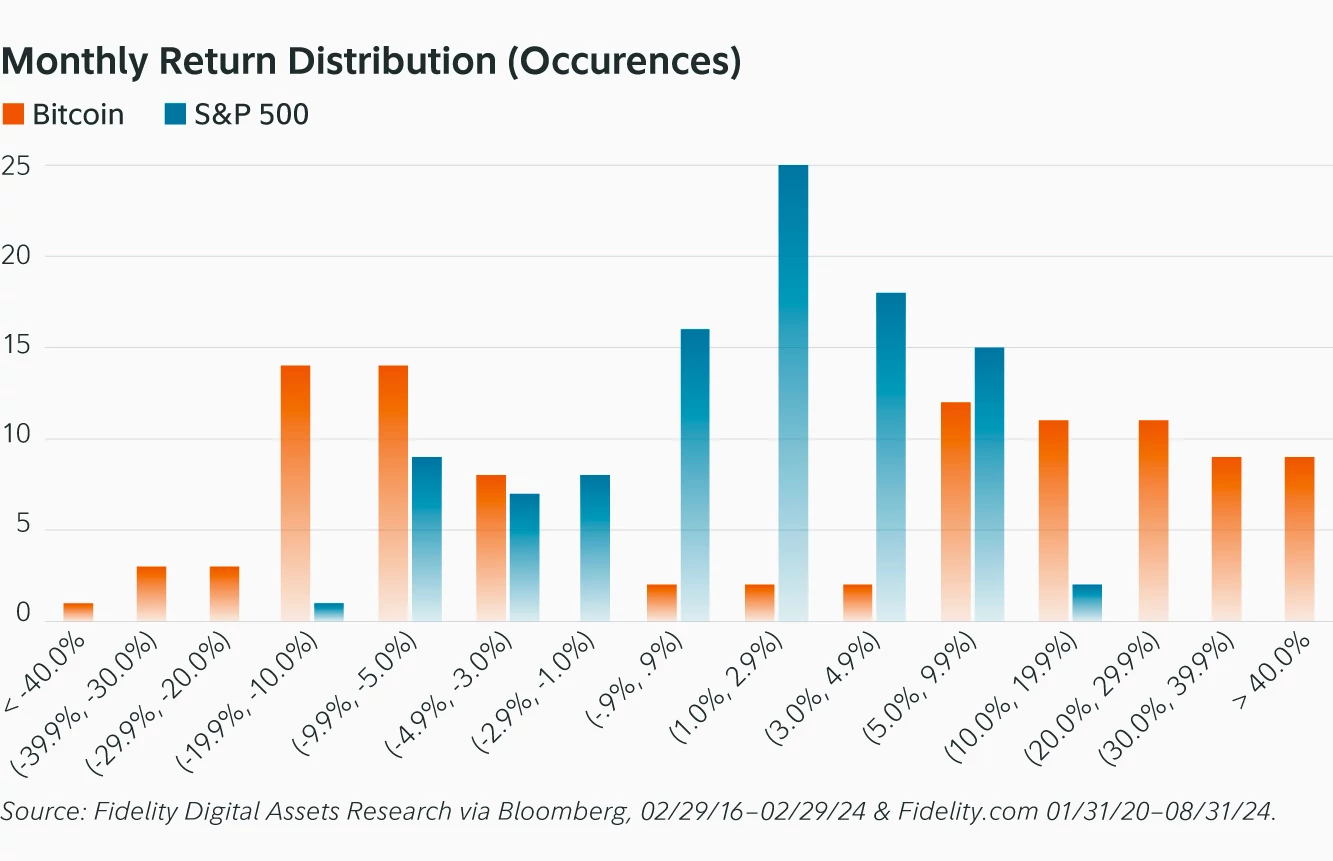
Nevertheless, pullbacks are an "inevitable" event during acceleration phases—this can be challenging for investors. However, compared to previous cycles, the recent pullbacks in Bitcoin have been relatively average. This suggests that as Bitcoin matures, volatility may weaken in both directions.
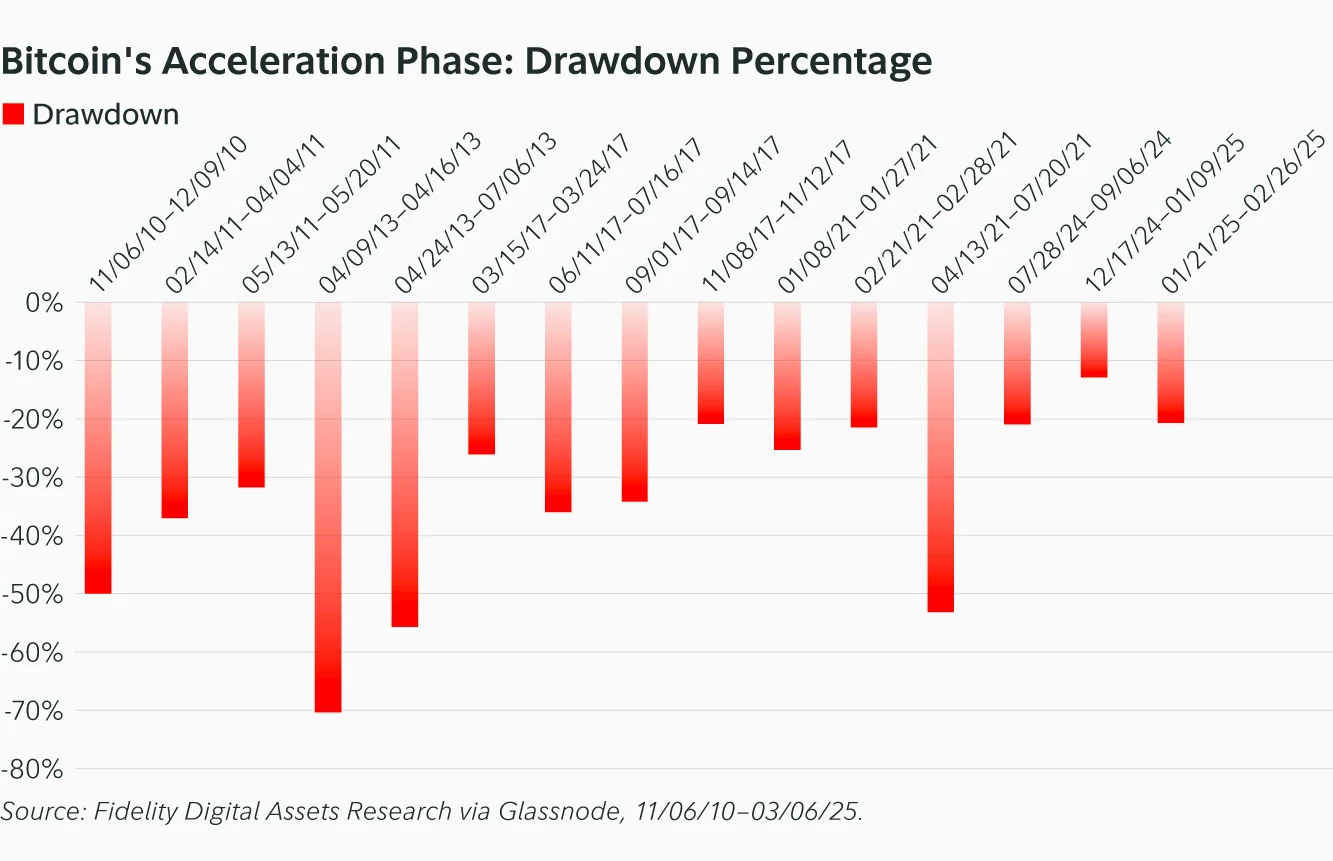
Are We Approaching the End of This Cycle?
While the future remains uncertain, historical experience suggests that as the acceleration phase extends, the likelihood of explosive peaks increases. As of March 3, Bitcoin has entered the 232nd day of the latest acceleration phase, nearing the peaks reached in previous phases before a sudden reversal. The acceleration phases of 2010-11, 2013, and 2017 peaked on days 244, 261, and 280, respectively, indicating that each cycle's acceleration phase has been slightly extended.
This does not necessarily mean that the current phase will end within this specific timeframe. However, history indicates that Bitcoin's acceleration phases may conclude with sharp, dramatic rebounds (similar to the grand finale of a fireworks display), followed by a rapid loss of momentum and entry into a reversal phase.
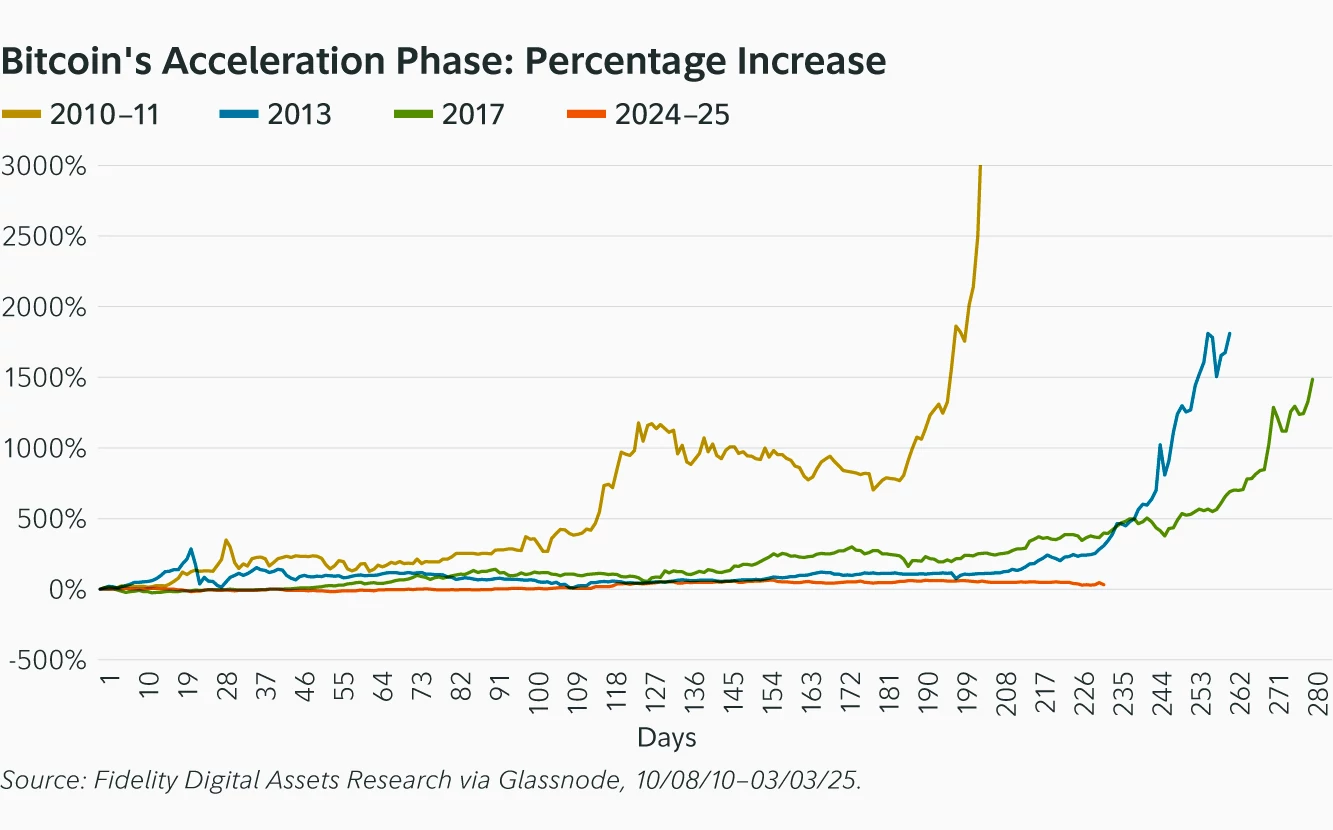
A key indicator to watch during the acceleration phase is the number of days Bitcoin reaches a new all-time high over a consecutive 60-day period. In previous acceleration phases, Bitcoin typically experienced two significant surges, the first occurring after the elections. If a new all-time high is imminent, its starting price will be close to $110,000.
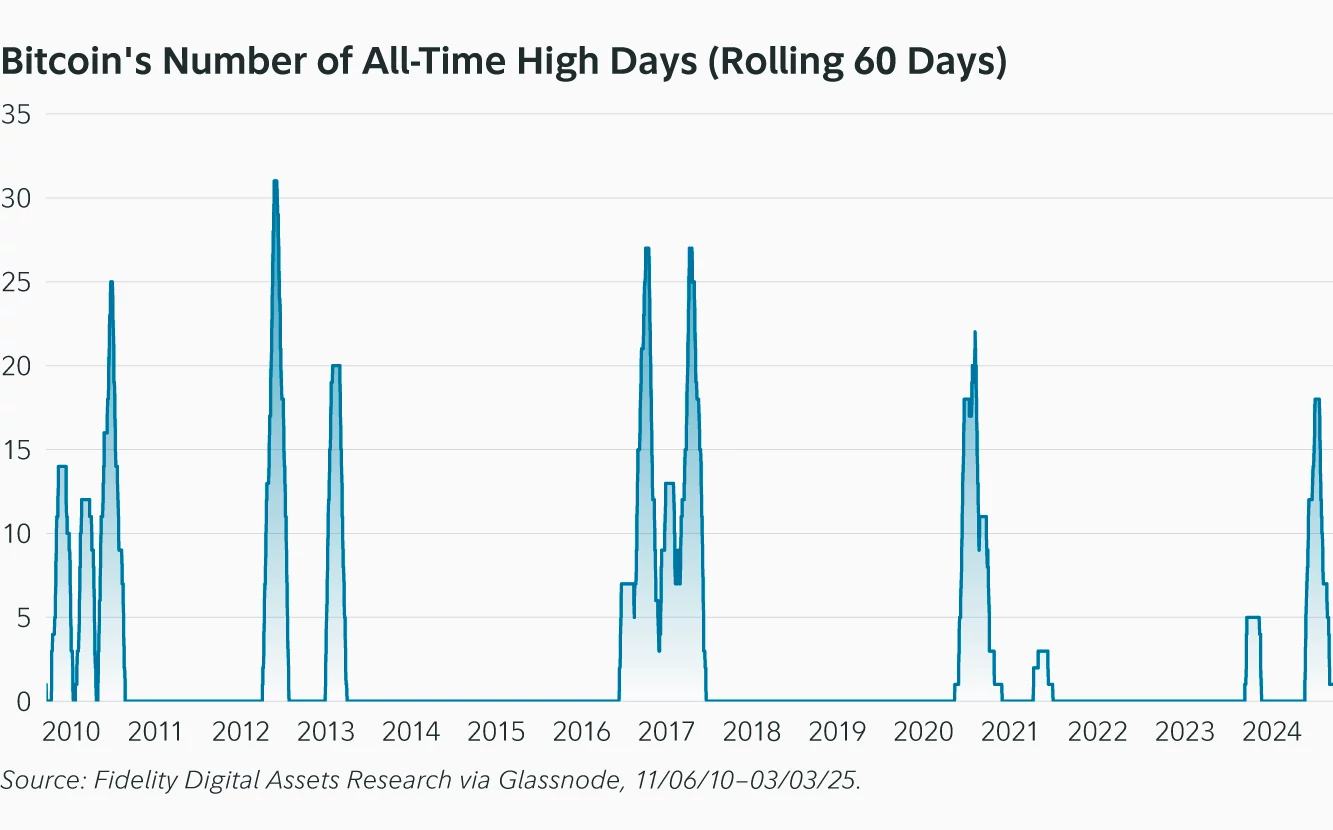
Notably, the only time the second rebound failed to materialize was in November 2021. As we continue to monitor the current cycle, it is important to observe whether Bitcoin follows its historical patterns or begins to show signs of divergence.
Related articles: BTC Approaches $80,000, Where is the Bottom?
免责声明:本文章仅代表作者个人观点,不代表本平台的立场和观点。本文章仅供信息分享,不构成对任何人的任何投资建议。用户与作者之间的任何争议,与本平台无关。如网页中刊载的文章或图片涉及侵权,请提供相关的权利证明和身份证明发送邮件到support@aicoin.com,本平台相关工作人员将会进行核查。




